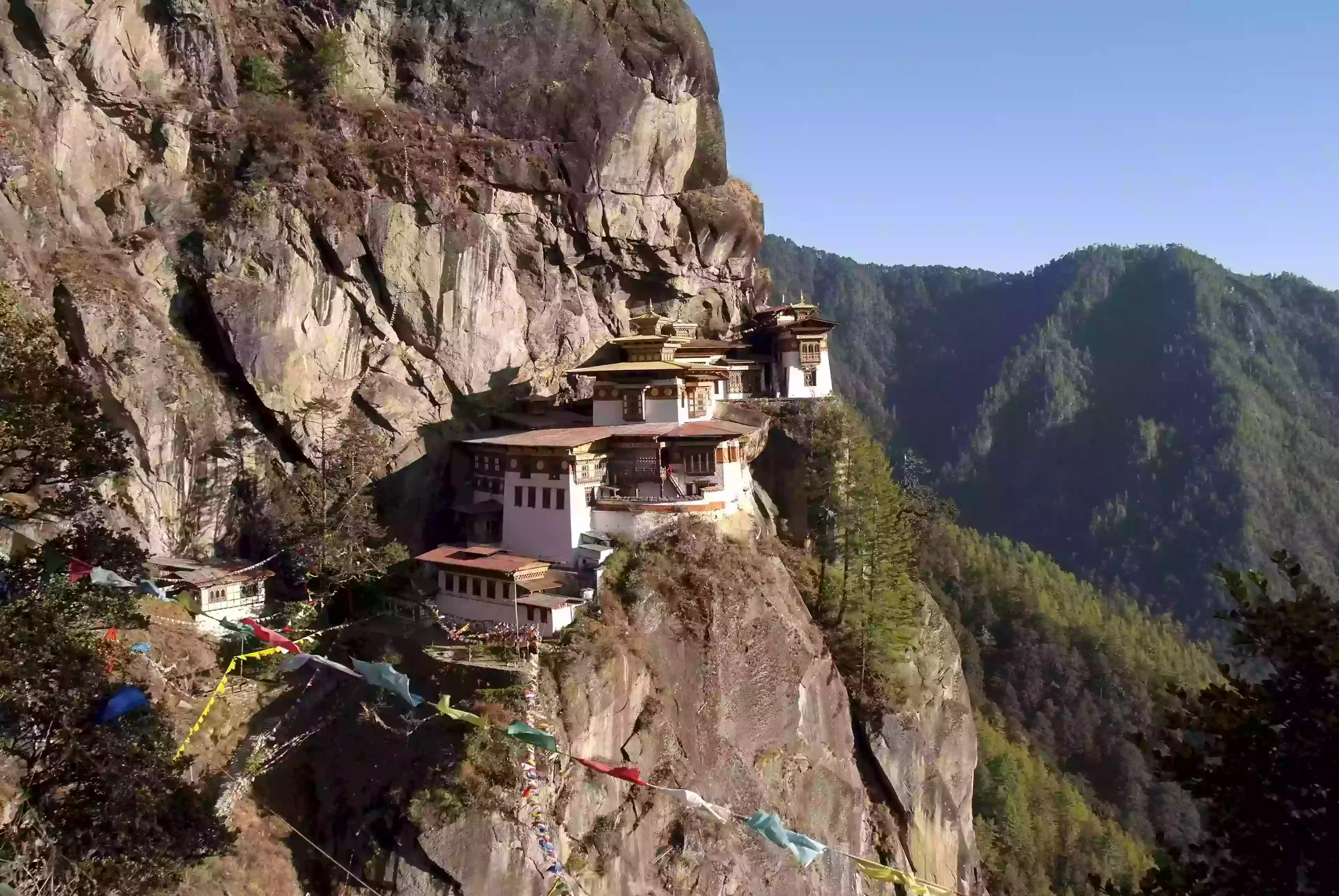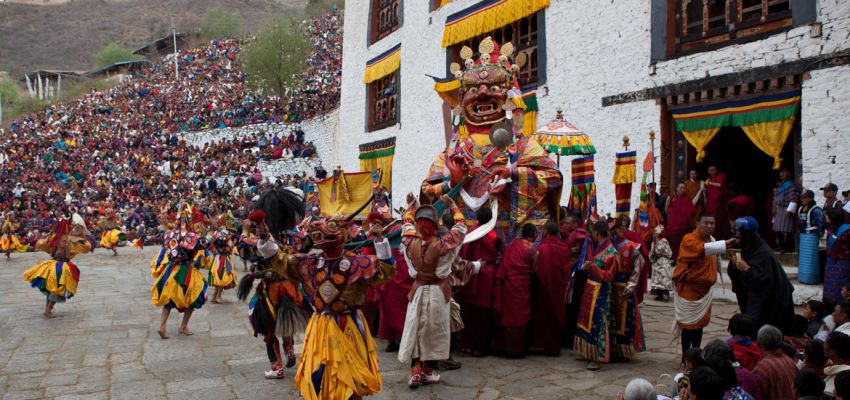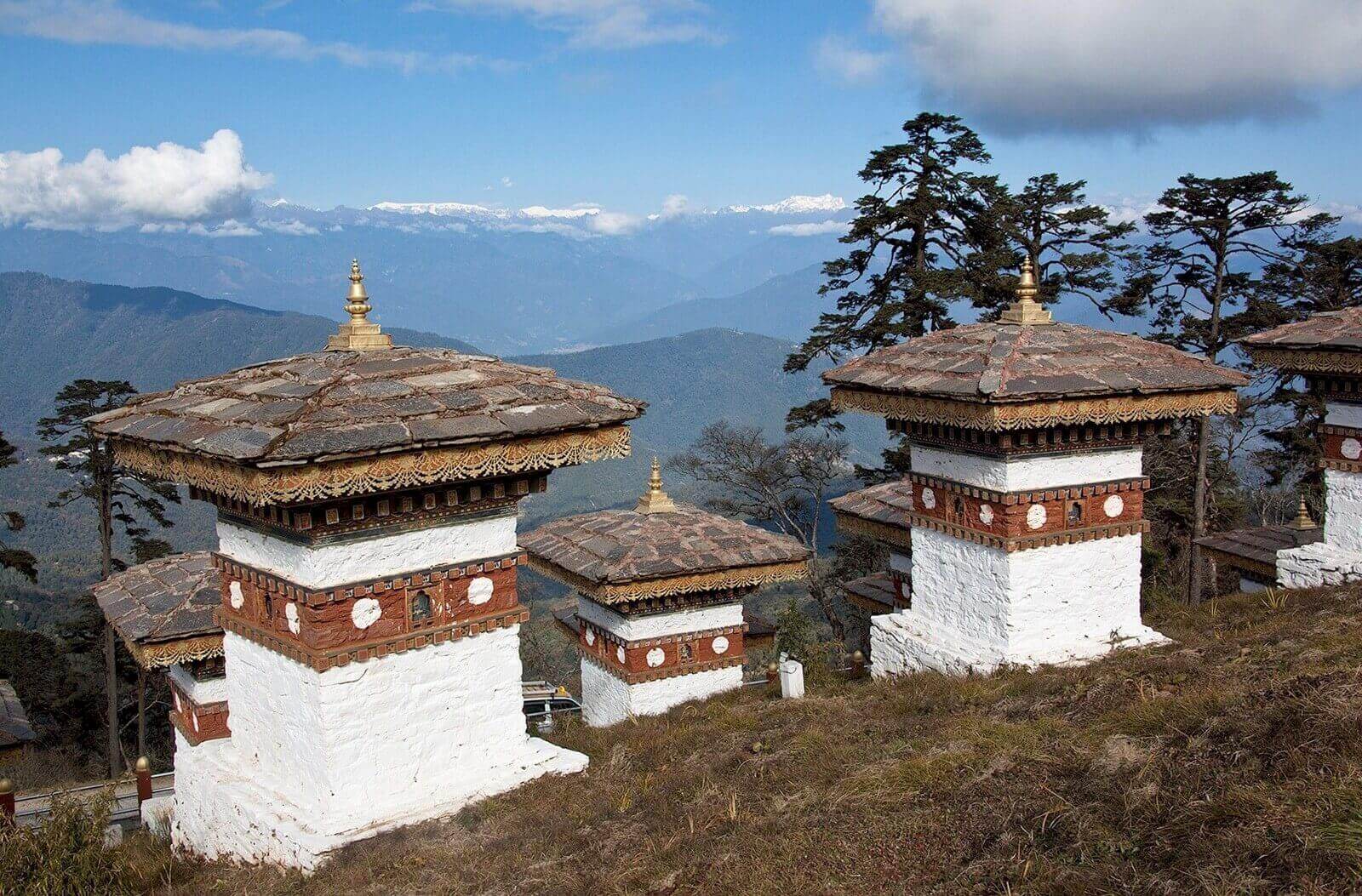Day-1: Paro
Day-2: Paro (3rd Day of the Tsechu)
Day-3: Paro
Day-4: Paro - Thimpu.
Day-5: Thimpu
Day-6: Thimpu - Punaka
Day-7: Punakha & Wangdue Tour
Day-8: Punakha/Wangdue-Thimphu ( 71 km, 2 1/2 hrs)
Day-9: Thimphu Tour & Thimphu-Paro
Day-10: Final Departure.
End of services
Day-1: Paro
The flight into Paro is spectacular on a clear day as magnificent views of the world's highest peaks give way to the lush green Paro valley as you land.

After lunch we will do some sightseeing around Paro, including a visit to the Ta Dzong Museum which houses religious relics, works of art and handicrafts offering a great orientation into Bhutan's historical, cultural, and religious past. We will then visit the Rimpong Dzong to see the painting of the great saint Milarepa Overnight Paro.
Day-2: Paro (3rd Day of the Tsechu)
Today we will enjoy the highlight of this 5 day festival, joining the festivities on the third day. Dressed in traditional finery, devotees flock to the Paro Dzong to proclaim their faith and receive blessings. Monks and lay people, dressed in elaborate silk costumes perform festive dances of good triumphing over evil to the haunting sounds of trumpets, cymbals and flutes. The dances and costumes have survived unchanged for thousands of years, each dance is an exact re-enactment of visions seen by Bhutan's great Buddhist saints and any changes would be seen as sacrilege. Many dances will be performed today including: Lords of the Cremation Grounds. Terrifying Deities, Heroes, Novel Man and Ladies Lencham, Stag and Hounds. Overnight in Paro.
Day-3: Paro
After breakfast hike to Taktsang Monastery. The trail is broad and the walk of approximately 2 hours uphill takes you almost a kilometre above the Paro valley floor (for those who cannot hike we will arrange a horse for transfer up to the viewing point). The view of Taktsang Monastery built on a sheer cliff face 900 metres above the valley floor is a spectacular sight. The Monastery is also an important pilgrim site for the Buddhists. The great Guru Rimpoche is said to have flown here on the back of a tigress when he brought the teachings of the Buddhist Dharma to Bhutan in the 8th Century. He then mediated in a cave there for three months where the monastery was later built. Nearby there is a teahouse where you can stop for refreshments.
In the afternoon drive to the ruins of the 17th Century Drukgyel Dzong, an historic monument built by the Shabdrung to commemorate his victory against invading Tibetans in 1644. In fine weather the towering peak of the sacred Mount Jomolhari (7314m) appears as a stunning backdrop. On the return drive to Paro, visit 7th Century Kyichu Lhakhang, one of the 108 temples constructed by the Tibetan king Songtsen Gampo.

Day-4: Paro - Thimpu.
Following an early breakfast, we will go to see the early morning blessing from Thangka of Guru Rhinpoche. Today is the most auspicious day of the festivities and dances of the Heroes, Ging and Tsholing, the Eight Manifestations, the Sixteen Fairies and the Religious Song are all performed in a magnificent cacophony of sound and color.
During the day you visit the National Museum, housed in the Ta Dzong (watchtower). Here is an intriguing collection of artifacts which provide you with a wonderful insight to the rich culture and heritage of the Kingdom of Bhutan. In the evening you will travel to Thimphu.
Day-5: Thimpu
Enjoy a morning of sightseeing, including a visit to 12th century Changangkha Temple, and the National Memorial Chorten depicting the Buddhist faith in the form of paintings and statues. In the afternoon return to Tashichhodzong to experience the colourful events of the Thimphu festival. Overnight at your hotel in Thimphu.
Day-6: Thimpu - Punaka
Today we drive over the Dochu-La pass (3,100 meters), which on a clear day offers an incredible view of Himalayan peaks before descending into balmy Punakha valley (about 3 hrs total driving time). The drive through the countryside affords a glimpse of everyday life in this most remote of Himalayan kingdoms. In the Dochu-La area there are vast Rhododendron forests that grow to tree size and bloom in late April/early May covering the mountains in a splash of colour.
Day-7: Punakha & Wangdue Tour
After breakfast, drive through the upper Punakha Valley you pass through traditional villages and farmlands before taking a pleasant short trek to Khamsum Yuelley Namgyal Chorten, built by the Queen of Bhutan for peace and stability in a changing world. In the afternoon you continue on to Wangdue, visiting the Devine Madman's Monastery - Chhimi Lhakang, famously known for its fertility shrine. The monastery is dedicated to Lama Drukpa Kuenley who used humour and outrageous behaviour to dramatise his teachings. The final visit of the day is to the ruins of Wangdue Dzong (destroyed by fire in 2012), situated on a ridge overlooking a river junction, it played an important role in unifying the western and southern regions of the country. You will also visit local markets in Punakha/Wangdue. Overnight in Punakha/Wangdue.

Day-8: Punakha/Wangdue-Thimphu ( 71 km, 2 1/2 hrs)
After breakfast travel to Thimphu through Dochula pass stopping at Simtokha Dzong en-route. Built in 1627, it is often said to be the oldest dzong in Bhutan. The site is said to have been chosen to guard over a demon that had vanished into a rock. The dzong was constructed to enclose the rock, to ensure that the demon would remain imprisoned. Simtokah Dzong now houses the Institute for Language and Culture. Your next destination is the Takin Preserve which houses the national animal, the unique Takin, which lives in herds at altitudes of over 4000 metres and weighs as much as 220 kilos! Your last visit for the day is the Government-run Handicraft Emporium and Craft Bazaar where you can find fine examples of locally produced woven textiles, thangkha paintings, ceramics, jewelery, slate and wood carvings. Overnight in Thimphu
Day-9: Thimphu Tour & Thimphu-Paro
Today, after breakfast, you continue to explore Thimphu and the surrounding area starting with The National Textile Museum, an excellent place to see traditional arts and crafts being perpetuated. You also visit the National Institute of Traditional Medicine, where medicinal herbs are compounded and dispensed and where traditional practitioners are trained. Visits are planned to the outdoor National Folk Heritage Museum, displaying rural life in Bhutan, the Chengzamtok Weaving Centre to observe beautiful colourful silk and cotton textiles being woven into shawls, scarves and traditional Bhutanese dresses and a Bhutanese paper factory to see the hand made traditional craft of paper-making. Good quality traditional paper is held in very high esteem in Bhutan. In the late afternoon drive to Paro and overnight in Paro.
Day-10: Final Departure.
Drive to airport for the final departure.
End of services
Tshechu are annual religious Bhutanese festivals held in each district or dzongkhag of Bhutan on the tenth day of a month of the lunar Tibetan calendar.
Bhutan has ‘High Value, Low Impact' tourism policy to preserve its cultural heritages and environment. Thus, with a high rate, it welcomes responsible travelers and few visitors. The policy is built on a daily “visa” fee of US$250 during the high season (which runs March to May and September to November), and US$200 during the low season (all other months). The amount sounds alarming, but is actually a minimum spending requirement that includes meals, three-star (minimum) accommodations in city hotels or countryside resorts, land transport, and guide service for every day spent in the country.
The elevation gain is around 530m or 1700 feet so it is a substantial climb and takes around 5-7 hours in total. However it is well worth the effort. By doing this at the start of the tour it helps with acclimatisation.
As a traveler from USA, Canada, Australia, New Zealand you will need an adaptor for types C, E, F, D, M, G.
As a traveler from England you will need an adaptor for types C, E, F, D, M.
As a traveler from South Africa you will need an adaptor for types C, E, F, G.
Yes a visa for Bhutan is required for every foreign traveler and has to be processed by a local tour operator, as no foreign embassy abroad grants tourist visas. The visa cost is currently $40 and your passport must be valid for at least 6 months after you leave Bhutan.
Tap water is not safe to drink so you would need to buy mineral water which is readily available. Mineral water is readily available throughout the country. While on trek the guides will ensure that the water is boiled.
English is commonly spoken, as it is the medium of instruction in schools. The national and official language of Bhutan is Dzongkha. Road signs and government documents are written in English and Dzongkha, and the national newspaper is printed in English, Nepali and Dzongkha.